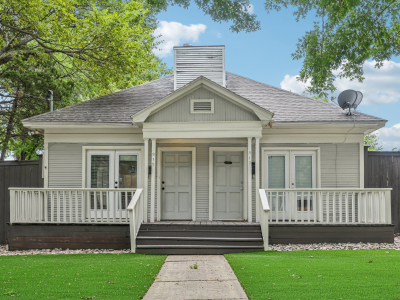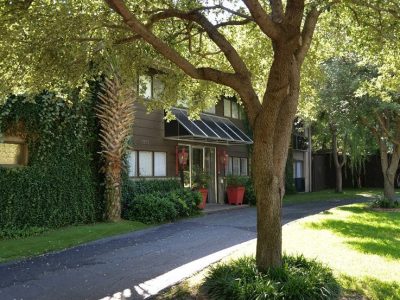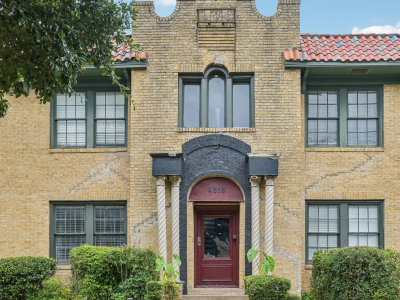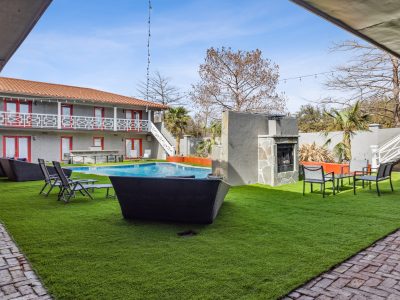The Rich and Vibrant History of East Dallas

East Dallas is a region steeped in history, culture, and community spirit. Its journey from a small settlement to a thriving urban area is marked by fascinating events and influential personalities. This article delves into the history of East Dallas, exploring its development, notable landmarks, and the diverse communities that have shaped its identity.
Origins of East Dallas
The Early Settlers
East Dallas traces its roots back to the early 19th century when settlers began arriving in the area. These pioneers were primarily farmers looking for fertile land to cultivate. Their efforts laid the foundation for what would eventually become a vibrant community.
Indigenous Tribes and Their Influence
Before the arrival of European settlers, the region was inhabited by indigenous tribes such as the Caddo and Comanche. Their presence and culture significantly influenced the early development of East Dallas, with many place names and cultural practices tracing back to these original inhabitants.
The Founding of East Dallas
East Dallas was officially founded in 1882. It quickly grew due to its strategic location and the influx of businesses and residents. The incorporation of East Dallas into the City of Dallas in 1890 marked a significant turning point, leading to rapid development and integration into the larger urban framework.
Growth and Development
Industrial Expansion
The late 19th and early 20th centuries saw significant industrial expansion in East Dallas. The establishment of factories and warehouses attracted workers and their families, contributing to the area’s growth.
Economic Prosperity
Economic prosperity followed industrial growth. East Dallas became known for its bustling markets and vibrant commercial districts, which attracted entrepreneurs and investors from various sectors.
Key Infrastructure Projects
Several key infrastructure projects, including the construction of major roads and railways, facilitated further growth. These projects improved connectivity and accessibility, making East Dallas a desirable place for businesses and residents alike.
Cultural Evolution
Ethnic Diversity
East Dallas has always been a melting pot of cultures. Over the years, it has welcomed immigrants from around the world, each bringing their unique traditions and customs. This diversity has enriched the cultural fabric of the community.
Community Traditions
Community traditions in East Dallas are a blend of old and new. Annual festivals, parades, and local fairs reflect the area’s rich cultural heritage and foster a strong sense of community among residents.
Impact of Migration
The continuous flow of migrants into East Dallas has shaped its demographic and cultural landscape. Each wave of migration has brought new influences, contributing to the area’s dynamic and evolving identity.
Historic Landmarks
The Wilson Block Historic District
The Wilson Block Historic District is one of East Dallas’ most cherished landmarks. Featuring beautifully preserved Victorian homes, this area offers a glimpse into the architectural and social history of the late 19th century.
The Swiss Avenue Historic District
Another notable landmark is the Swiss Avenue Historic District, known for its grand homes and tree-lined streets. This district represents the architectural grandeur and affluence of early 20th century Dallas.
The Lakewood Theater
The Lakewood Theater, with its distinctive art deco design, has been a cultural hub in East Dallas for decades. It has hosted countless performances and remains a beloved icon in the community.
Influential Figures
Significant Historical Personalities
East Dallas has been home to many significant historical personalities. These individuals have made substantial contributions to the area’s development and have left lasting legacies.
Community Leaders
Community leaders in East Dallas have played pivotal roles in advocating for the needs and interests of residents. Their leadership has been instrumental in driving positive change and fostering community spirit.
Contributions of Women in East Dallas
Women have made significant contributions to the history of East Dallas. From activists to entrepreneurs, their efforts have shaped various aspects of community life and development.
Education and Institutions
Early Schools and Education
Education has always been a priority in East Dallas. Early schools laid the foundation for a strong educational system that continues to serve the community well.
Dallas Independent School District
The Dallas Independent School District (DISD) has a significant presence in East Dallas. It oversees numerous schools in the area, providing quality education to thousands of students.
Higher Education Institutes
Higher education institutes, such as community colleges and specialized training centers, contribute to the educational landscape of East Dallas, offering opportunities for lifelong learning and professional development.
Architectural Heritage
Victorian and Colonial Styles
East Dallas is renowned for its Victorian and Colonial architectural styles. These historic buildings are a testament to the area’s rich architectural heritage and add to its unique charm.
Preservation Efforts
Preservation efforts in East Dallas aim to protect and maintain its historic buildings. These initiatives ensure that the area’s architectural legacy is preserved for future generations.
Modern Architectural Additions
In addition to historic structures, East Dallas features modern architectural additions that blend seamlessly with the old, creating a diverse and dynamic urban landscape.
Economic Changes
The Great Depression Impact
The Great Depression had a significant impact on East Dallas, leading to economic hardships for many residents. However, the community showed resilience and gradually recovered in the following decades.
Post-War Economic Boom
The post-war economic boom brought prosperity to East Dallas. New businesses, housing developments, and infrastructure projects spurred growth and revitalization.
Contemporary Economic Trends
Today, East Dallas continues to experience economic growth. The area attracts businesses and professionals, contributing to its ongoing development and vibrancy.
Social Movements
Civil Rights Movement
East Dallas played a role in the Civil Rights Movement, with local activists advocating for equality and justice. Their efforts helped pave the way for significant social changes.
Women’s Suffrage
The women’s suffrage movement also had a presence in East Dallas. Women in the community were active participants in the fight for voting rights and gender equality.
Modern Activism in East Dallas
Modern activism in East Dallas addresses various social issues, from environmental sustainability to housing affordability. Community members continue to advocate for positive change and social justice.
Recreational Spaces
White Rock Lake Park
White Rock Lake Park is a beloved recreational space in East Dallas. It offers a wide range of outdoor activities, including hiking, biking, and boating, making it a favorite spot for residents.
Samuell-Grand Park
Samuell-Grand Park is another popular recreational area, featuring sports facilities, picnic spots, and a vibrant community garden. It serves as a gathering place for families and friends.
Tietze Park
Tietze Park, with its playgrounds, sports fields, and green spaces, provides a perfect setting for community events and leisure activities. It’s a testament to East Dallas’ commitment to maintaining accessible recreational areas.
Transportation Milestones
Early Transportation Systems
Early transportation systems in East Dallas, including streetcars and horse-drawn carriages, played a crucial role in the area’s development. These systems facilitated movement and commerce, contributing to growth.
The Growth of the Automobile Era
The growth of the automobile era brought significant changes to East Dallas. Improved road infrastructure and increased car ownership transformed the way residents lived and worked.
Public Transportation Evolution
Public transportation in East Dallas has evolved over the years, with the introduction of buses and light rail systems enhancing connectivity and accessibility for residents.
Community Initiatives
Neighborhood Associations
Neighborhood associations in East Dallas play a vital role in fostering community spirit and addressing local issues. These organizations work to improve the quality of life for all residents.
Urban Renewal Projects
Urban renewal projects have revitalized various parts of East Dallas, transforming underutilized areas into vibrant community spaces. These initiatives have attracted new businesses and residents.
Green Initiatives
Green initiatives in East Dallas focus on sustainability and environmental conservation. Community members are actively involved in projects that promote green living and reduce the area’s ecological footprint.
Arts and Entertainment
Local Music Scene
The local music scene in East Dallas is vibrant and diverse. From jazz to rock, the area has produced and hosted numerous talented musicians and bands, enriching the cultural landscape.
Theatrical Heritage
East Dallas has a rich theatrical heritage, with historic theaters and performance venues showcasing a wide range of productions. These institutions contribute to the area’s cultural vibrancy.
Festivals and Events
Festivals and events in East Dallas celebrate its rich history and cultural diversity. These gatherings foster community spirit and provide opportunities for residents to come together and celebrate.
Modern Day East Dallas
Current Demographics
East Dallas today is a diverse and dynamic community. Its population reflects a mix of ages, ethnicities, and backgrounds, contributing to its rich cultural fabric.
Recent Developments
Recent developments in East Dallas include new residential and commercial projects, infrastructure improvements, and community initiatives aimed at enhancing the quality of life for residents.
The Future of East Dallas
The future of East Dallas looks bright, with ongoing projects and initiatives aimed at promoting sustainable growth and development. The community’s resilience and adaptability will undoubtedly continue to drive its progress.
—
FAQs
What are the origins of East Dallas?
East Dallas was founded in 1882 and later incorporated into the City of Dallas in 1890. Its origins can be traced back to early settlers and indigenous tribes.
How has East Dallas evolved over the years?
East Dallas has evolved through industrial growth, economic prosperity, and cultural diversity. Significant infrastructure projects and community initiatives have also played key roles in its development.
What are some historic landmarks in East Dallas?
Notable historic landmarks in East Dallas include the Wilson Block Historic District, the Swiss Avenue Historic District, and the Lakewood Theater.
Who are some influential figures in East Dallas history?
Influential figures in East Dallas history include community leaders, significant historical personalities, and women who have contributed to various aspects of community life.
What recreational spaces are available in East Dallas?
Recreational spaces in East Dallas include White Rock Lake Park, Samuell-Grand Park, and Tietze Park, offering a range of outdoor activities and amenities.
What does the future hold for East Dallas?
The future of East Dallas includes sustainable growth and development, driven by ongoing projects and community initiatives aimed at enhancing the quality of life for residents.
—
The history of East Dallas is a rich tapestry of cultural diversity, community spirit, and continuous evolution. From its early days as a small settlement to its current status as a vibrant urban area, East Dallas has been shaped by numerous factors and influential figures. As the community looks to the future, its resilient spirit and commitment to progress will undoubtedly continue to drive its growth and development.




